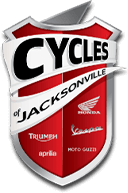Safe ATV Towing
 All-terrain vehicles (or ATVs) have been popular powersports machines since their rise in the 1980s. Used for both work and play, they are loved by people of all stripes who enjoy the adrenaline rush they get whenever they twist the throttle. Going out on a weekend adventure to an off-roading trail is a great way to spend time with your friends and family while getting away from the noise and bustle of the city.
All-terrain vehicles (or ATVs) have been popular powersports machines since their rise in the 1980s. Used for both work and play, they are loved by people of all stripes who enjoy the adrenaline rush they get whenever they twist the throttle. Going out on a weekend adventure to an off-roading trail is a great way to spend time with your friends and family while getting away from the noise and bustle of the city.
However, to get out to wherever you want to go, whether it’s ten miles outside of town or a park in the next state over, you’re going to need to tow your ATV there. Most quads will never fit in a typical pickup truck bed, so you’ll need to have a trailer that’s made to handle the weight of your powersports vehicle.
If you are new to towing your ATV, this guide by Cycles of Jacksonville serving Florida will help you learn how to safely haul your vehicle wherever it is you’d like to go.
Form A Plan
It’s good to prepare yourself before you begin so you know what to do and in what order to do it. This means ensuring that both your trailer and your towing vehicle are capable of hauling the weight of your ATV.
You’ll also need to practice hitching and unhitching your trailer so you can do it with confidence. Figure out where your ATV will sit so that its weight is evenly distributed to avoid putting undue pressure on the trailer’s tires.
Hitch The Trailer
Next, you should hitch your trailer up to your towing vehicle and find a piece of flat ground to park your towing set up on. You want to have enough room to safely drive your ATV up the ramp and into the trailer.
To hitch your trailer, orient its tongue to sit above the ball hitch on your towing vehicle, then back up the truck so the latch is beneath the tongue. Park and lower the tongue onto the joint and secure it in place. As a precaution against a faulty hitch, attach tow chains to your vehicle and trailer, crossing them in an X shape under the tongue for stability. This will keep your trailer hitched up if the actual hitch disconnects until you can park safely and address the issue.
Next, set up your brakes and lights. These may be independently powered or they may have wires that need to be connected to your towing vehicle’s electric system.
Level & Load Your Trailer
Having gotten everything in place, you can load your four-wheeler onto your trailer now. Make sure you have enough distance to get up to speed, but don’t go so fast you plow through the front of the trailer. Drive in as straight a line as you can and ease up the ramp, then park.
Now it’s time to secure your ATV in place, making sure the weight is balanced. Ratchet straps are a good option for this because they hold down the suspension to reduce the movement. Try to push your quad to see if it moves out of place at all. If it does, tighten the straps more.
Safe Driving While Towing
Now that everything is ready to go, you can head out on your adventure. Make sure that you remain under 60 miles an hour while driving on the highway, since trailer tires can’t really handle high speeds. Increase your following distance behind other vehicles because you’re going to need more time and space to bring your towing setup to a complete stop if you need to brake suddenly. Allow other drivers to pass you and try to avoid changing lanes so you can reduce how much your trailer sways. It’s important that you drive safely and responsibly with a heavy towing setup, even if other drivers are irresponsible.
Seeking 4-wheelers near Jacksonville? Visit our dealership today to investigate our available stock of new and used ATVs for sale. If your quads need parts or services, we have departments to help you with maintenance and repair! Cycles of Jacksonville proudly serves the cities of Orlando and St. Augustine, Florida.
